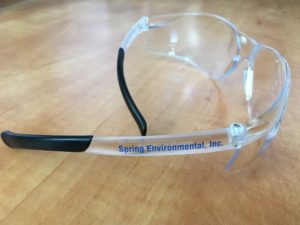The April HAZWOPER Challenge is now closed. Thank you for participating. Please come back May 1st for our next HAZWOPER Challenge!
Category Archives: Announcements
March HAZWOPER Challenge
February HAZWOPER Challenge
January HAZWOPER Challenge
December HAZWOPER Challenge
November HAZWOPER Challenge
October HAZWOPER Challenge
OSHA’s Restructuring, What You Need to Know!
The Occupational Safety and Health Administration (OSHA) announced a restructuring initiative for their regional operations to more effectively and efficiently manage their resource. Under the old alignment, the United States and its territories were broken into numbered regions, 1 thru 10 by geographic location. With the realignment comes new regions and regional designations.
OSHA will transition from the numbered system to a geographical naming convention. The biggest changes are the combining of OSHA regions 9 and 10 to form the San Francisco region and the stand-up of the Birmingham Region. The combining of regions 9 and 10 was driven by the presence of state plans in that region which will allow OSHA to redirect Federal resources where they are needed most according to Assistant Secretary for Occupational Safety and Health Doug Parker. The full transition is expected to be completed by the end of fiscal year 2024.
For more information, you can read the OSHA news release here including a map of the new regional structure.
September HAZWOPER Challenge
Another Tool for your Safety Toolbag!
As the average temperatures continue to rise throughout the world, the American Industrial Hygiene Association (AIHA), in collaboration with East Carolina University, has developed a new heat stress app to aid in the protection of workers. The new app is focused on utilizing an adjusted wet bulb globe temperature (WGBT) to identify risks associated to the worksite so appropriate exposure controls can be put into motion. The app will calculate risk based upon several factors including location, work intensity, and protective clothing used. For those employers with multiple locations, the app is being designed with the ability to monitor multiple work locations simultaneously. The AIHA is also trying to develop a forecasting feature into the app that will enable employers to better plan for possible exposures. The app has completed the Beta testing phase and is available for Apple and Android users.
For more information on heat stress and the app, visit the AIHA website.

